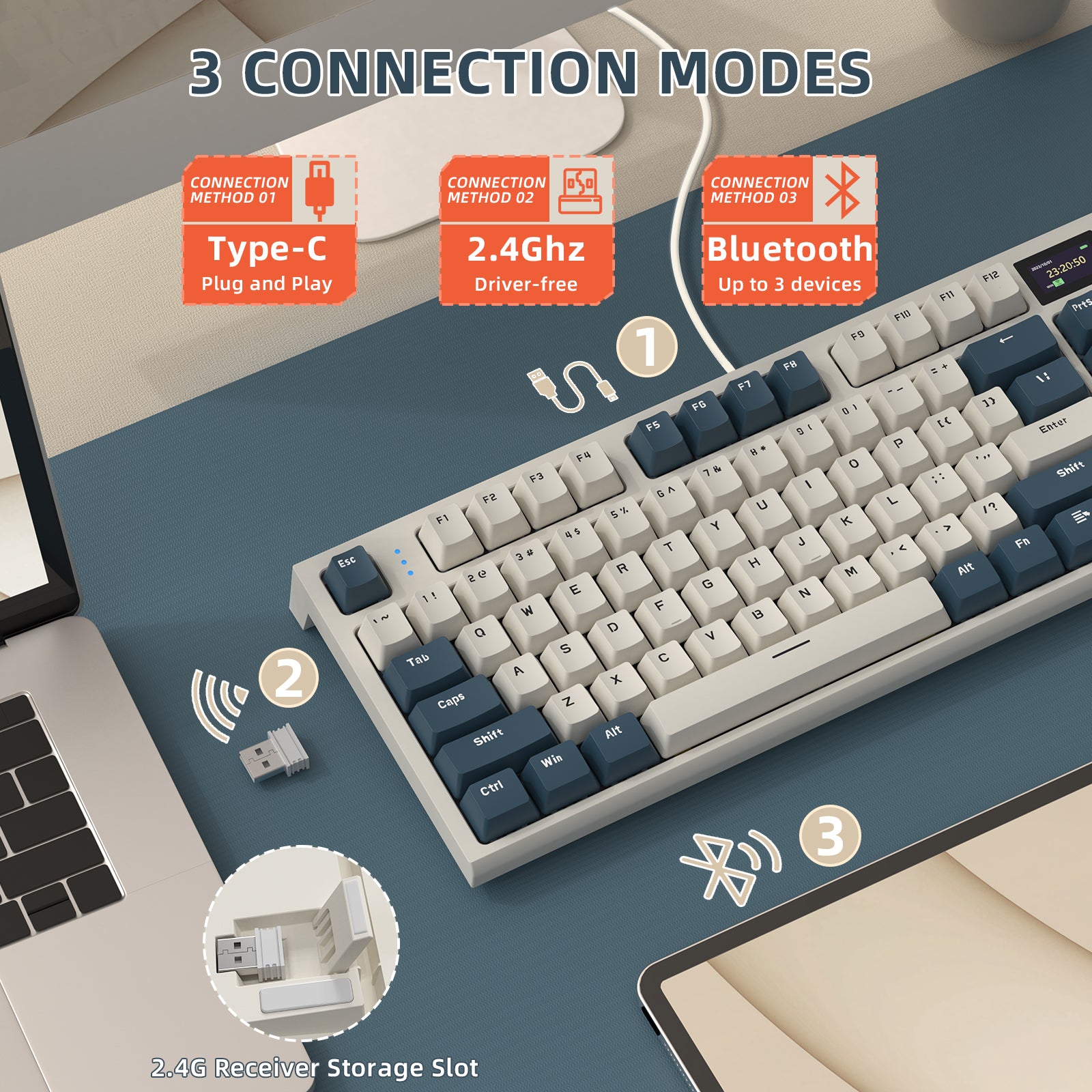Unlock the Secret Power of Mechanical Keyboards: Discover Their Game-Changing Features and Benefits!
In recent years, mechanical-switch keyboards have gained immense popularity, especially among gamers and avid typists. Unlike traditional membrane keyboards, mechanical-switch keyboards utilize individual mechanical switches beneath each key, offering a unique typing experience that many users find superior. This article aims to delve into the fascinating world of mechanical keyboards, exploring their features, benefits, and various types available in the market. Whether you are a casual user or a hardcore gamer, understanding these keyboards can significantly enhance your computing experience.

Understanding Mechanical-Switch Keyboards
Mechanical-switch keyboards are distinct from their membrane counterparts primarily due to their construction and the way they register keystrokes. Each key on a mechanical keyboard is equipped with its own switch mechanism, which typically consists of a housing, a spring, and a stem. When you press a key, the stem moves down, compressing the spring until it reaches a point where it makes contact with the electrical circuit, registering the keystroke. This design not only provides a tactile feedback that many users appreciate but also allows for more precise typing. In contrast, membrane keyboards use a rubber dome that collapses when pressed, which can lead to a less satisfying and less responsive typing experience. Thus, the mechanics behind mechanical-switch keyboards make them a popular choice for those who prioritize performance and feel.
Features of Mechanical Keyboards
Mechanical keyboards boast an array of features that set them apart from traditional keyboards. One of the most notable characteristics is the variety of key switch types available, each offering a different feel and sound profile. Additionally, mechanical keyboards are often built with higher-quality materials, resulting in a more robust and durable product. Many models also come with customizable options, including programmable keys and RGB lighting, allowing users to tailor their keyboard to their specific preferences. The ability to replace keycaps also adds a level of personalization that is not typically found in other keyboard types. Furthermore, many mechanical keyboards feature a detachable cable for easy transport, making them ideal for gamers who take their setup on the go.
Key Switch Types
When it comes to mechanical switches, there are three primary types to consider: tactile, linear, and clicky. Tactile switches provide a noticeable bump when the key is pressed, giving users feedback that the keystroke has been registered without producing an audible click. Linear switches, on the other hand, offer a smooth keystroke without any tactile feedback or sound, making them a favorite among gamers who prefer rapid key presses. Clicky switches, as the name suggests, provide both tactile feedback and an audible click, appealing to those who enjoy the sound of their keyboard while typing. Each type of switch caters to different preferences, so understanding these distinctions can help users make an informed choice when selecting their mechanical keyboard.
Benefits of Using Mechanical Keyboards
The advantages of mechanical keyboards extend beyond just their construction and features. Users often report a significantly improved typing experience, as the tactile feedback and key travel distance contribute to more accurate typing. This is particularly beneficial for those who type for extended periods, as the ergonomic advantages can reduce fatigue and discomfort. Durability is another critical advantage; mechanical keyboards are designed to withstand millions of keystrokes, making them a wise investment for heavy users. In the realm of gaming, mechanical keyboards can enhance performance by allowing for faster response times and more precise inputs. The customizable features also enable gamers to optimize their setup for different games, providing a competitive edge. Overall, the benefits of using a mechanical keyboard can greatly enhance both productivity and enjoyment.
Types of Mechanical Keyboards
Mechanical keyboards come in various types tailored to different users and purposes. Gaming keyboards are specifically designed with features like customizable RGB lighting, programmable macros, and sometimes even dedicated gaming modes that enhance the gaming experience. Ergonomic designs focus on comfort, often incorporating wrist rests and key layouts that reduce strain during long typing sessions. Compact layouts, such as tenkeyless or 60% keyboards, are popular among minimalist users and gamers who require a more portable option. Each type offers unique features that cater to specific needs, making it essential for users to identify their primary use case when selecting a mechanical keyboard. For instance, a friend of mine switched to a compact mechanical keyboard for gaming and found that it improved their desk space and overall comfort during long sessions.
Key Takeaways on Mechanical Keyboards
In summary, mechanical-switch keyboards offer a plethora of features and benefits that make them an appealing choice for a wide range of users. From their distinctive mechanical switches to their robust build quality and customizable options, these keyboards can significantly enhance your typing and gaming experience. When considering a mechanical keyboard, it's essential to reflect on your specific needs and preferences, as the right choice can lead to improved performance and enjoyment. Whether you're a gamer seeking precision or a typist aiming for comfort, a mechanical keyboard could be the perfect addition to your setup.








